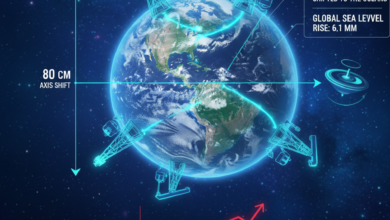NASA releases breathtaking photos of Jupiter’s most volcanic moon

NASA’s Juno mission made its 51st close flyby of Jupiter, capturing images of its moon Io in the process. The photos of Io, the planet’s most volcanic moon, are quite striking.
NASA’s Juno spacecraft has traveled 820 million kilometers around Jupiter and its moons, documenting as much as possible and transmitting valuable scientific images to Earth. In the process, NASA’s Juno spacecraft made 51 close flights to Jupiter, capturing breathtaking images of the gas giant’s volcanic moon Io.

The most volcanic body in the solar system: Io
Juno flew closer to Io than ever before (35,500 kilometers) on May 16, and the onboard JunoCam revealed the satellite’s intense volcanic activity. Infrared image taken before flight by Juno’s Jovian InfraRed Auroral Mapper (JIRAM) reveals numerous hotspots of volcanic activity on Io’s surface.
Slightly larger than Earth’s moon, Io is known as the most volcanically active body in the Solar system. Io is home to hundreds of actively erupting volcanoes that spew their ash miles up. Behind this extreme volcanic activity lie Jupiter and its large moons Europa and Ganyme. These two moons are constantly stretching and compressing Io gravitationally.

Juno’s main mission was originally to study Jupiter, but NASA now uses it to study moons. Arriving at Jupiter on July 4, 2016, Juno will approach within 1,500 kilometers of Io’s surface in December 2023 and February 2024. It is aimed to collect much more detailed images and data from these flights. Meanwhile, the JUICE vehicle launched by ESA a while ago will reach Europa and Ganymede in 2031 and examine Jupiter’s moons in depth. More will be learned about Jupiter and its system over the next decade.






